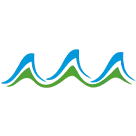Falls happen fast—but radar can respond faster.
Whether it’s a loved one living independently or a senior in a care facility, monitoring health and ensuring safety without being intrusive has always been a challenge. Linpowave’s 60GHz millimeter-wave radar is changing the equation—quietly, privately, and precisely.
Let’s explore how radar technology is transforming elderly care, and how Linpowave is making it accessible.
Why Radar for Elderly Care?
Unlike traditional monitoring tools—like cameras or wearables—radar doesn’t rely on light, physical contact, or constant user interaction. It simply senses what’s happening in a room:
-
Detects movement, posture, and even breathing
-
Works in complete darkness or through furniture
-
Protects privacy—no images, no microphones, just data
For elderly individuals, this means they can move freely and be safe, without wearing anything or being constantly watched.
Real-World Use Cases
1.Fall Detection That Doesn’t Miss a Beat
Falls are the leading cause of injury among seniors. Linpowave radar can detect falls in under a second—even if they happen in a bathroom, at night, or behind furniture. Once a fall is detected, it can immediately trigger alerts to caregivers or monitoring systems.
📈 Test data shows over 96% fall detection accuracy in real-life settings.
2.Non-Intrusive Vital Signs Monitoring
With radar’s ability to detect micromovements, Linpowave enables contactlessbreathing and heart rate monitoring. It’s ideal for seniors with cardiac or respiratory issues, offering continuous oversight without any wearables or wires.
3.Daily Activity Tracking for Behavioral Insights
Know if someone is staying active, spending more time sitting, or waking up frequently at night. Linpowave radar enables long-term activity pattern analysis, which can help flag early warning signs of health deterioration—before symptoms appear.
How It Works
Linpowave’s radar uses 60GHz signals to track movement, distance, and velocity. In elderly care applications, it’s typically mounted on ceilings or walls and configured to monitor specific zones (like bedsides, bathrooms, or living areas).
-
Zone-based detection: Define sensitive areas for focused monitoring
-
Edge computing: Radar data is processed locally—no cloud required
-
API-friendly: Integrates easily with smart home platforms or hospital systems
👉Explore Linpowave Radar Modules
Why Linpowave?
| Feature | What It Means for Elderly Care |
|---|---|
| Ultra-compact modules | Easy integration into existing rooms |
| High-resolution sensing | Detects subtle movements like chest rise |
| Data privacy by design | Complies with HIPAA and GDPR standards |
| Long-term stability | Zero maintenance once deployed |
Our team has worked with senior living facilities, smart home developers, and health device integrators to customize solutions that work in real life—not just labs.
What Caregivers Are Saying
“Radar helps us monitor residents 24/7—without invading their space. It gives peace of mind to families and lets our staff focus on real care.”
— Director of Care, Assisted Living Facility, Singapore
Ready to Modernize Elderly Care?
From passive fall detection to continuous health insights, Linpowave’s radar offers a smarter way to protect the elderly—quietly, safely, and respectfully.
🔗Get in Touch with Our Team
🔗Download the Elderly Care Radar Guide (PDF)
FAQ
Q1: Does Linpowave radar record audio or video?
No. It uses electromagnetic signals to detect movement and breathing. There are no cameras or microphones.
Q2: Can it work in multiple rooms?
Yes. Multiple radar nodes can be installed to cover entire apartments or facilities and coordinated via API or gateway.
Q3: What’s the detection range?
Up to 6 meters for movement; up to 2 meters for vital signs. It can be fine-tuned based on installation environment.
Q4: Is it compatible with existing elderly care platforms?
Yes. Linpowave offers developer-friendly SDKs and can integrate with many IoT, health monitoring, and smart care ecosystems.
Q5: How is privacy ensured?
Radar only captures motion and micro-movement data—no identity, no visuals. All processing can be done locally.



